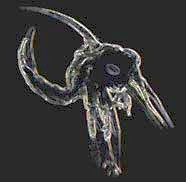 Professor Steven Morgan has developed key areas in coastal oceanography and larval biology at BML that are critical to the State’s needs and their priorities. His strong collaborations with the Coastal Oceanography Group is one of the key examples of interdisciplinary science at BML. Examples include: 1) interdisciplinary projects investigating the linkages of ecological processes with physical oceanography in estuarine and ocean ecosystems to understand larval transport; 2) establishing and developing approaches for evaluating marine protected areas along the California coast; 3) use of resident sentinel species for assessing ecosystem health that include contaminant impacts on early life stages of indigenous invertebrates and vertebrates; and 4) the lead scientists who established the “Bodega Line”, a cross-continental shelf multidisciplinary monitoring effort that examines the physical forces on the productivity of the coastal ecosystem and directly forecasts year-class strength in critical species such as salmon.
Professor Steven Morgan has developed key areas in coastal oceanography and larval biology at BML that are critical to the State’s needs and their priorities. His strong collaborations with the Coastal Oceanography Group is one of the key examples of interdisciplinary science at BML. Examples include: 1) interdisciplinary projects investigating the linkages of ecological processes with physical oceanography in estuarine and ocean ecosystems to understand larval transport; 2) establishing and developing approaches for evaluating marine protected areas along the California coast; 3) use of resident sentinel species for assessing ecosystem health that include contaminant impacts on early life stages of indigenous invertebrates and vertebrates; and 4) the lead scientists who established the “Bodega Line”, a cross-continental shelf multidisciplinary monitoring effort that examines the physical forces on the productivity of the coastal ecosystem and directly forecasts year-class strength in critical species such as salmon.
Professor Morgan and colleagues are at the forefront of determining the extent of larval transport and population connectivity in coastal upwelling ecosystems, including oceanographic data from the Bodega Ocean Observing Node (BOON), cross-shelf surveys, coupled behavior-physical models, natural elemental markers and robots simulating larval behaviors. Professor Morgan’s research has shown conclusively that the larval behavior exploiting physical processes effectively maintains larvae on the shelf and regulates recruitment back to adult habitats despite strong, persistent prevailing winds along the North coast of California. These findings overturn the long-standing ecological paradigm that larval recruitment in upwelling regions is regulated by the strength and persistence of prevailing winds sweeping larvae far offshore where they are lost at sea. Instead, surfzone hydrodynamics is a key determinant of subsidies of larvae and planktonic food to inshore communities. Furthermore, he demonstrated that reproductive timing is key to the survival of larvae, and larval mortality rates are lower than widely thought. Professor Morgan also helped lead a large collaboration among CMSI colleagues to develop indicators of ecosystem health in coastal and marine environments, which have been applied to assess the impacts of superfund sites and oil spills.

